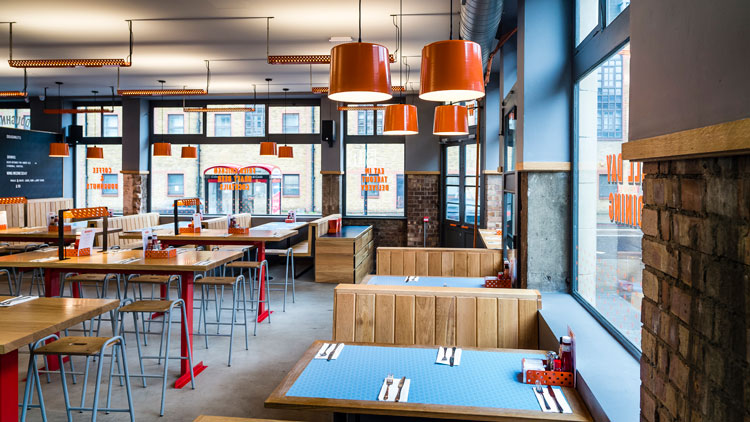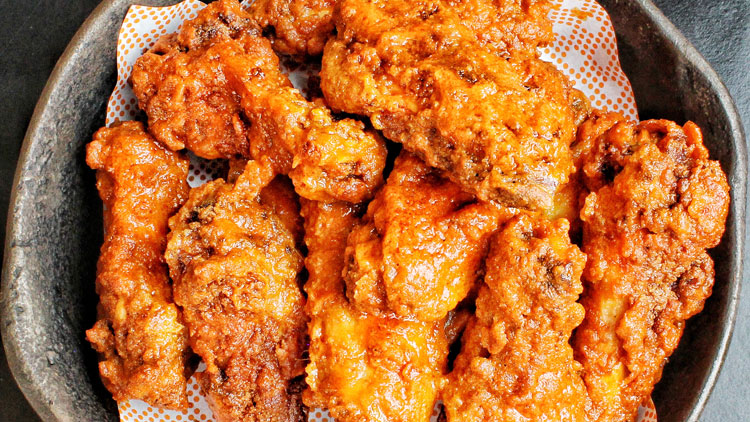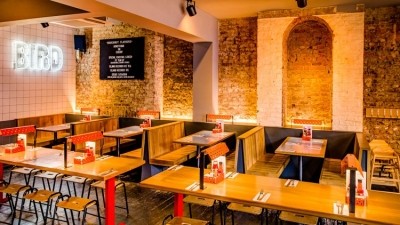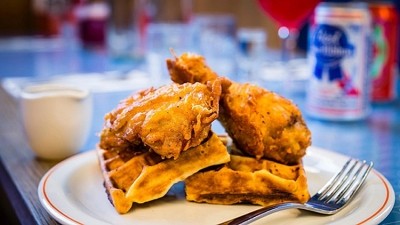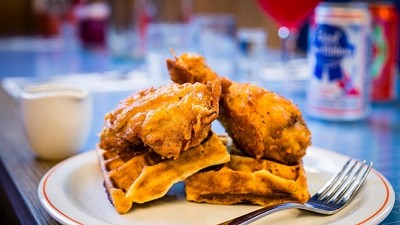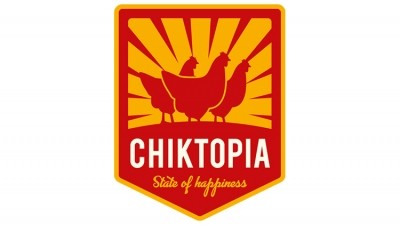Winging it: how Bird cracked the chicken market
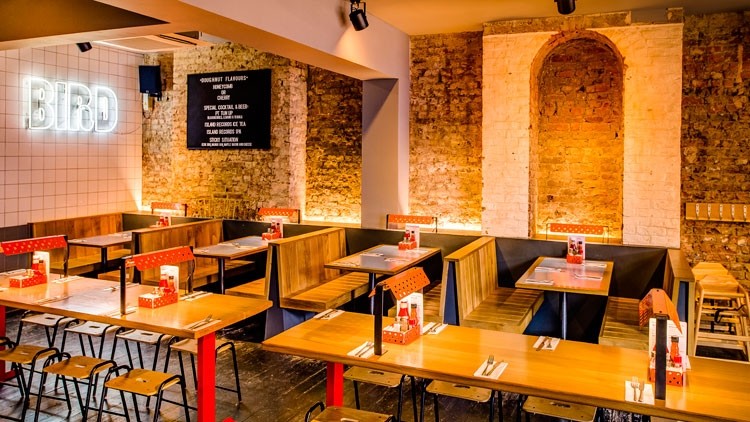
It’s taken the best part of four years, but Cara Ceppetelli and Paul Hemings are finally starting to enjoy running Bird. The Canadian expat couple are surprisingly frank about their fried chicken and waffle restaurant’s wobbly takeoff and – though they don’t explicitly say so – one gets the feeling that Bird only just managed to clear the ground in the early days.
“It was just awful,” says Ceppetelli. “Looking back I think part of the problem was that we jumped straight in. We didn’t do a pop-up. We didn’t do a truck. We didn’t test our product or build our brand.”
“We just weren’t good enough when we started out,” interjects Hemings. “Both the food and service were inconsistent. It’s taken a few years to get it right. Clearly that wasn’t the pitch to the 20 or so high-net-worth investors that helped us launch the business. It’s been a rough ride for them, but the majority have stuck with us.”
Things are looking up now. The husband-and-wife duo operate four sites with two more in the pipeline and are about to mark two years of positive like-for-like growth.
Hatching a plan
The daughter of a chef and a prominent restaurateur, Ceppetelli has always been in the food industry. Having worked in restaurants in Canada, she attended Le Cordon Bleu shortly after arriving in London and launched one of the UK’s first ever burrito brands, Burrito Chicks, out of the couple’s Canary Wharf flat.
Hemings was an investment banker at the time and used his contacts to help his wife get her food into some of the area’s biggest financial institutions. “We always wanted to do something together in restaurants but did not have aspirations to have me in the kitchen and Paul out front. We wanted to create something that could scale,” says Ceppetelli.
The pair – who, despite their differing backgrounds, run their restaurant business as a “total collaboration” without sticking to specific roles – started to develop Bird in 2013, spending a winter testing fried chicken recipes.
“The perception is that fried chicken is an
easy product to cook. It isn’t"
It was a heady time in the branded restaurant world. Gondola Group had just sold the then 34-strong Byron to Hutton Collins Partners for £100m, Jamie’s Italian seemed unstoppable and Gaucho’s CAU spin-off was tipped as one to watch. “The huge success Byron was having was one of our biggest drivers. The idea of finding an existing product category and improving it really appealed to us. We wanted to do for fried chicken what they did for burgers,” says Hemings.
The pair weren’t the only ones to see potential in poultry. In the run up to Bird’s 2014 launch several other chicken brands attempted to take flight including Chick ‘n’ Sours, Chicken Shop, Wishbone, Chooks, Clockjack Oven, Roost, Whyte & Brown and The Flat Chicken.
The logic seemed sound. There appeared to be a gaping hole in the market for a branded chicken restaurant that was a step up from Nando’s, KFC and downmarket independents. But of that clutch just two have managed to get off the ground with more than a couple of sites – Bird and Soho House’s Chicken Shop (the latter serves rotisserie-cooked chicken rather than deep-fried) – with the majority no longer in operation.
Mislaid hopes
So what was the problem? Specialist chicken restaurants are competing against KFC and Nando’s: formidable and ubiquitous businesses that sell a consistently satisfying product at a competitive price.Like its competitors, Bird discovered that the appetite for better quality – and often higher welfare – chicken at a premium price was not as large as in the better burger category, where consumers are willing to trade up from the fast-food giants (more recent ‘ethical’ chicken restaurant casualties include Josh Eggleton’s Chicken Shed in Bristol, Hen in Brighton and Chicken Town in Tottenham).
“KFC is the benchmark,” says Hemings. “It’s a phenomenally well-run business that serves a great product.”
The second issue is that fried chicken and, to some extent, chicken more generally, is a surprisingly difficult product to serve at a consistently high standard. On top of that, free-range birds aren’t nearly as well suited to the deep fryer as their battery farm-reared counterparts.
“We were serving higher quality birds at higher prices but it wasn’t as good. That’s a difficult place to be,” admits Ceppetelli. “The perception is that fried chicken is an easy product to cook. It isn’t. If you overcook a piece of fried chicken by 30 seconds it’s rubber and if you undercook it you’re going to kill someone. There’s a very low margin for error.”
Bird also had a number of self-made challenges to contend with. Along with inconsistent food quality and service in the early days of the business, it started out with the wrong fried chicken recipe. “We thought Korean fried chicken would be a USP. But the process (which sees birds double fried in a wet batter) does not lend itself well to larger pieces of meat,” says Ceppetelli.
At nearly 3,500sq ft Bird’s debut Shoreditch restaurant was, and remains, far too big for the business. The site has 80 covers upstairs and a further 50 in the basement, which means it looks quiet even if it has a good number of customers inside, which is a deterrent for some people, admits Hemings. “We discovered to our cost that perception is everything in this business. It was a ridiculous mistake.”
A second crack at it
Ceppetelli, Hemings and longstanding head of operations Dan Moore have now addressed both of these issues. The chicken is cooked in the more familiar north American-style (marinated in buttermilk, dipped in spiced flour and fried just once) and the sites that have followed the Kingsland Road original – in Islington, Camden and Westfield Stratford City – are of a more suitable size for the operation (the latter is a kiosk set within a food court).
Average spend per head is between £15 and £16 net and the business is 85% food-led with key menu items including wings, fried chicken burgers, combos of fried chicken pieces served with an eclectic range of sauces and an Insta-friendly chicken and waffle burger.
“We realised that if a high proportion
of our customers don’t eat-in,
we don’t need to build the space for them”
Delivery has also become a key part of the business through its subsequent restaurants, with volumes increasing at a steady pace.“We realised that if a high proportion of our customers don’t eat-in, we don’t need to build the space for them,” says Hemings. “We’re now terrified of larger sites. Westfield was an eye-opener because we make the same £1m plus turnover that we do at the other sites in a far smaller space. That site is a one-off, but it has made us totally rethink our strategy. We now believe our sweet spot to be sites a little over 1,000sq ft.”
Bird’s fifth site is located in Canary Wharf’s market hall concept Wharf Kitchen trading alongside six other operators including Ahi Poke, The Athenian and The Vurger Co. The company is also in legals for a site in Brixton that – all being well – is expected to open in March next year.
Both will offer counter service, but with food brought to tables, the system that has proven so popular with the likes of Nando’s and Gourmet Burger Kitchen. They have been designed with delivery in mind, with kitchens built for high volumes and a layout that provides easy access for couriers.
Delivering growth
Delivery across Uber and Deliveroo accounts for 20% to 25% of each of Bird’s three restaurant’s sales (being located in a shopping centre, Bird Westfield does not accept delivery orders). Average order value is between £21 and £22.
“Delivery is now a core part of the model. The challenge is that you lose a big chunk of margin. We’re paying between £80,000 and £90,000 in commission across the business each year,” says Hemings.
This, coupled with high rents, high business rates and rising staff and food costs is squeezing profits at the group. Yet in spite of these challenges the pair are optimistic about the future, although
they are somewhat less bullish about their growth targets than they were when they started out.
“It’s nice having a small group of restaurants and the prospect of a few more. It’s starting to be a little bit fun, although there’s still a fair bit to worry about,” says Hemings. “We used to say we’d get to 25 but slow is the new fast for us. We’d rather have 10 restaurants that work well than a larger group of restaurants with a few duds. That’s toppled many an empire.”
Chicken run: How Bird sources its meat
In contrast to the majority of its competitors in the casual dining space, Bird started out serving free-range chicken. But the business is now in a transitional period following supply issues last year. The company’s farm in Yorkshire was unable to supply it so Bird had to buy elsewhere. And because supplies of free-range halal chicken were limited, it was forced to get it from lots of different sources. “Quality and size was variable. We were having to manage it every day,” says co-founder Paul Hemings. “The summer of 2017 was a disaster.”
Alongside cost, one of the principle challenges of free-range chicken for restaurants is that both size and quality can be inconsistent. Birds that spend time in the elements are smaller in the winter months, for example. Chickens that spend their lives in temperature-controlled barns are far more consistent.
Bird has since worked with its original supplier to create a bespoke chicken. While it isn’t free-range, Hemings’ business partner Cara Ceppetelli believes the new spec results in a higher quality of life for the chicken and better meat.
“Now we’ve properly looked into what free-range actually means we’ve come to the conclusion that the definition is just not good enough,” she says. “It can mean they’re outside, but on concrete rather than grass, and a lot of other things that compromise the quality of the bird. The fact that free-range chickens have to be inside for the first 35 days of their lives is also problematic.”
Bird is not the only chicken specialist that has found it necessary to work closely with its chicken supplier. Carl Clarke and David Wolanski’s Chick ‘n’ Sours and CHIK’N brands – which are in many ways Bird’s most direct competition – sends its Somerset supplier waste oil from its fryers to power some of its equipment, for example.
Hemings admits that it would only have been a matter of time before Bird had to drop free-range, which most chicken specialists find prohibitively expensive. “As we become more mainstream as a brand we’re getting more scared of price increases. Brexit has made everything go up. It does not matter that we get our chicken from Yorkshire.”
